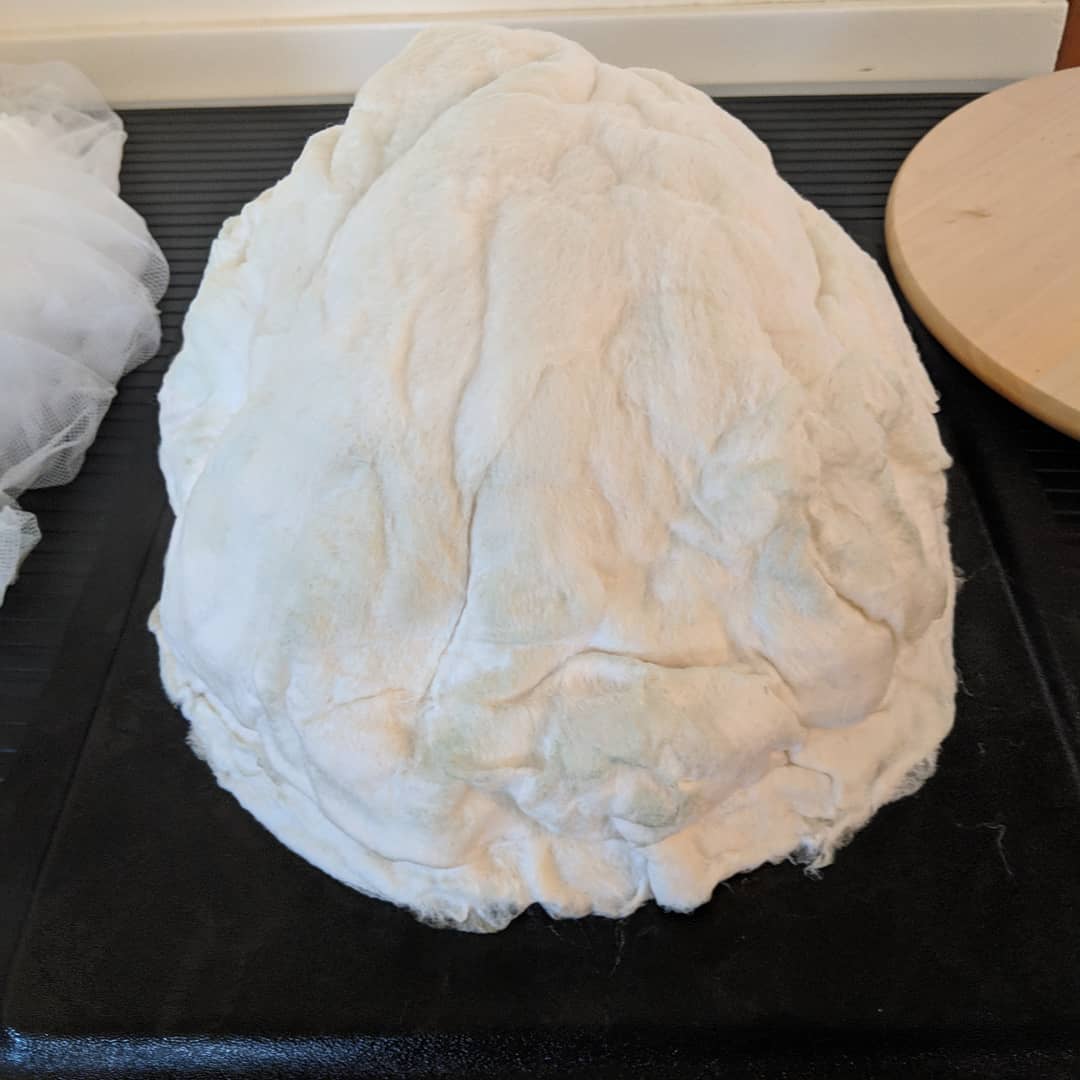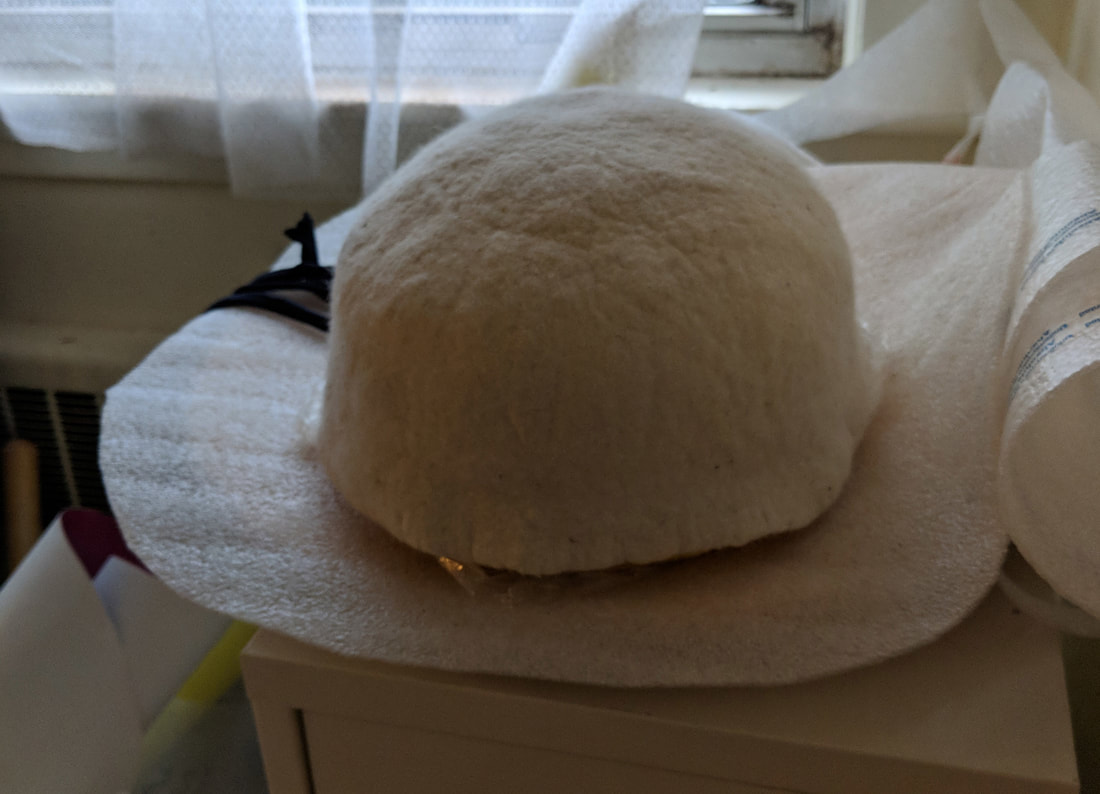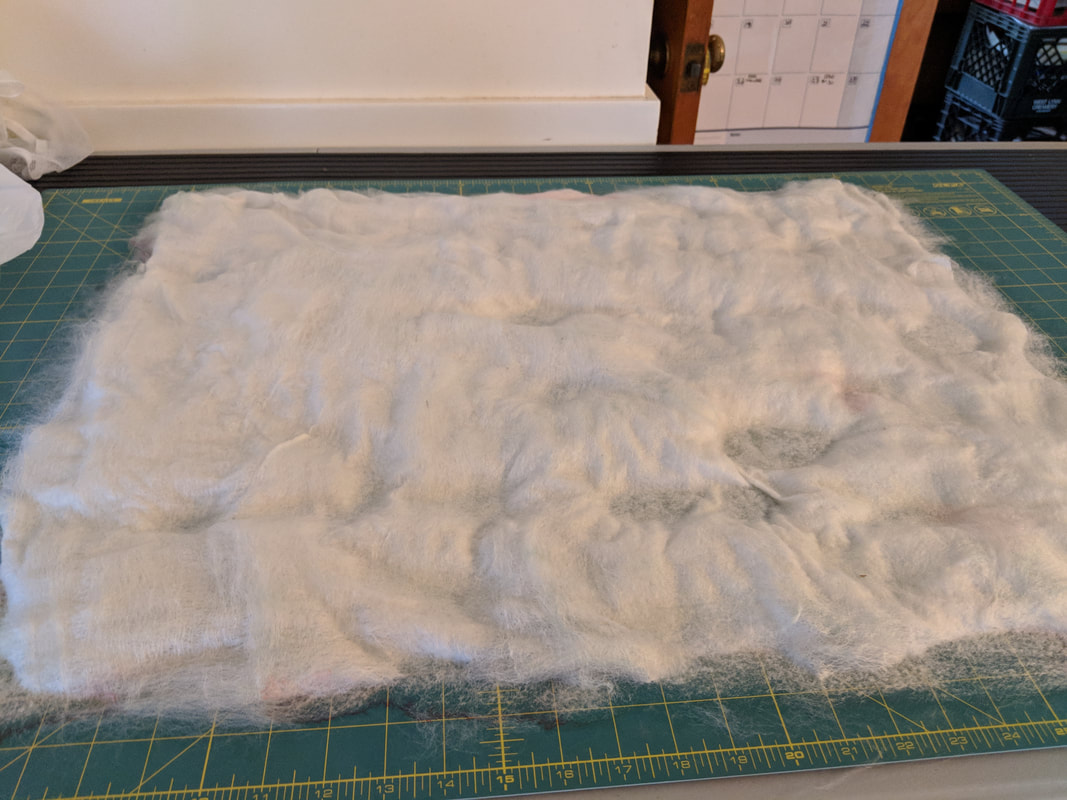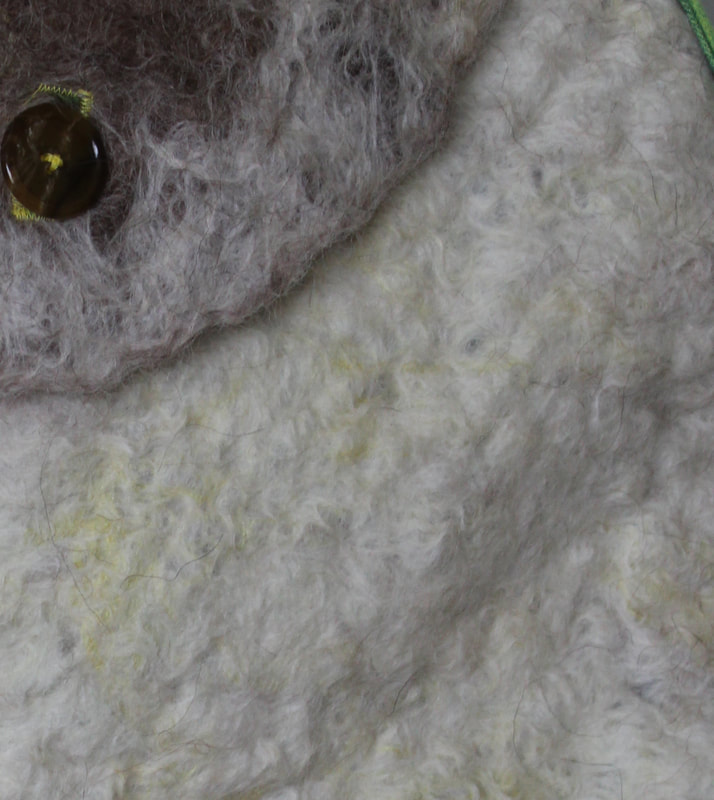|
I'm starting to experiment with making hats. I got some hat forms and a shaping dome from Hat Shapers, which makes hat forms designed for feltmakers. The process is to first make the hood, and in its partly felted state, shrink down the hood onto the hat form. I've made hoods by molding fleece around a two-dimensional resist, but I thought using the shaping dome would more easily create a symmetric hood.
0 Comments
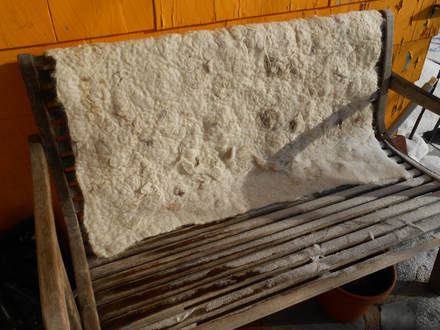 The first Icelandic wool that I ever worked with came from "trash fleece" given to me by a local farmer raising Icelandic sheep for meat. I'd read that Icelandic wool felts easily, and I was intrigued by a wool that was coarse yet felted so readily. Other breeds of coarse wools had been difficult to felt and I assumed that was true of all coarse breeds. Brought to Iceland by Vikings about 1100 years ago, Icelandic sheep have retained characteristics that have been bred out of modern sheep of the European continent. That includes having a "dual-fiber" coat, which has two layers. The fibers of the outer layer are called tog and are long, coarse and water-repellent; the fibers of the inner layer are called thel and are shorter, finer and provide the animal with insulation. In the era before industrialization, shepherds processed the wool by hand, differentiating the fibers into separate kinds of yarn. When mechanization was introduced to wool processing, the machines could not separate the two fibers and so they were combined into just one kind of yarn, called lopi. Lopi is also the name of an Icelandic wool company that sells Icelandic wool yarn. The fleece I got was knotty and full of vegetal matter, but not greasy, as Merino can be. Washing out the grease wasn't hard, but the knots made carding challenging. 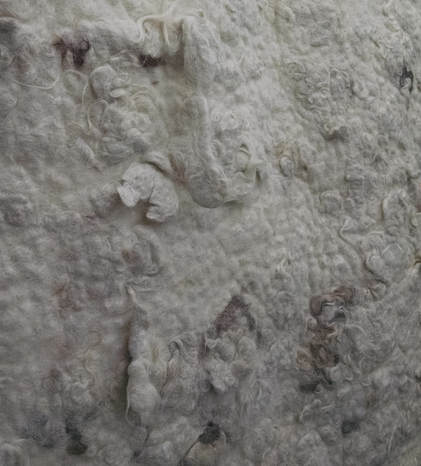 I made a rug out of this fleece, shown above. Serendipitously, the knottiness of the dirty fleece created a lot of texture in the felt with random locks hanging off the body of the rug. The softer thel fibers, which seemed almost as fine as Merino, provided the cohesion, and the coarse tog fibers provided the texture. The felt came together quickly and easily. The felt doesn't shrink down as much as Merino would, but it is cohesive. I also learned that throwing the felt to shock and shrink it, which is a technique many felt makers use, can eject the coarse tog fibers from the piece, so it might be better to handle Icelandic felt with care. Maybe with all things, no? |
AuthorFeltmaking, dyeing, sewing. A woman and the fabric of her life. Archives
September 2021
Categories
|

